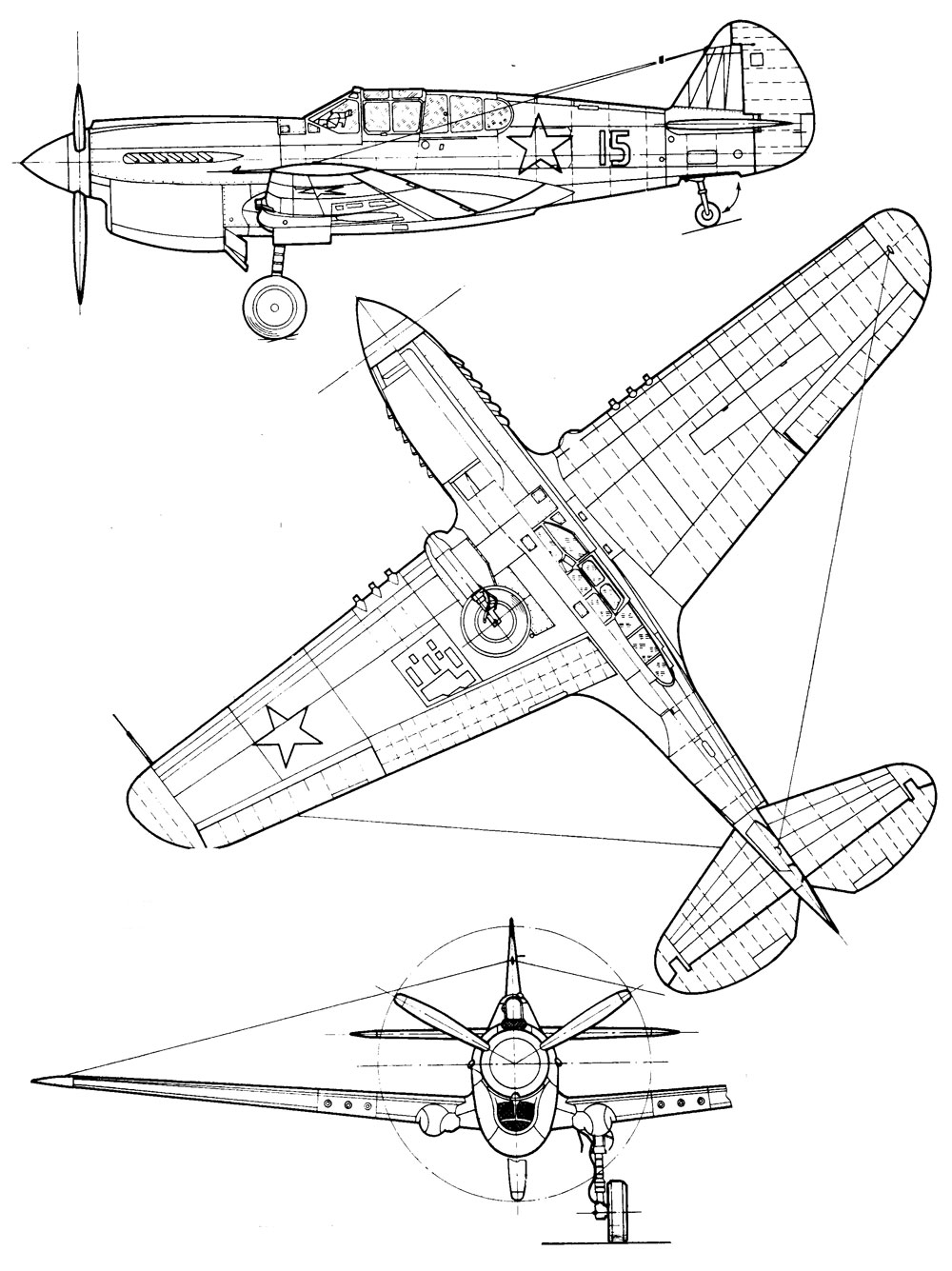The Warhawk employed a single Allison V-1710-39 V-12 liquid-cooled piston engine, delivering 1,240hp.
Adapted from the P-36A, the Curtiss-Wright P-40 Warhawk fighter was the brainchild of Donovan R. Berlin, a project engineer for the Curtiss-Wright Company. After several modifications, the P-40N was produced in 1944 for use during World War II. Curtiss produced 13,783 P-40s in various configurations, known as the Warhawk, Kittyhawk and Tomahawk. These fighters served throughout the war on every front with no less than 28 Allied nations. No other fighter during the war saw wider service; 5,219 N models were built.


Serial Number: 42-105270
Manufacturer: Curtiss Aeroplane and Motor Company
Crew: One
Engines: One Allison V-1710-81 inline reciprocating; 1,200 horsepower
Wingspan: 37 feet 4 inches
Length: 33 feet 4 inches
Height: 12 feet 4 inches
Weight: 6,300 pounds (empty); 8,850 pounds (loaded)
Speed: 290 mph (cruising); 350 mph at 16,400 feet
Range: 750 miles
Service Ceiling: 31,000 feet
Armament: Six .50-caliber machine guns; up to 500 pounds of bombs
Cost: $44,359 (actual)
In May 1939, following evaluation trials in competition with other pursuit prototypes, the XP-40 was declared the most acceptable and 524 P-40s were ordered. In the winter of 1941–1942, Hill Air Force Base had the responsibility for the overhaul of the P-40. In August 1944, a production line was set up for the storage of various aircraft. The base stored 250 operational-ready P-40s during World War II. The P-40B, which is similar to the British Tomahawk II, introduced armor protection for the pilot and doubled the wing firepower with four .30 caliber machine guns, as well as two .50-caliber guns mounted on the engine bowling.
During the attack on Pearl Harbor, a few P-40s managed to take flight to fight against the Japanese aircraft. The P-40 did fall short on performance compared with other American fighters in the service at the outbreak of the war.
The P-40N at Hill Aerospace Museum is a composite of two aircraft. One is a fiberglass P-40E replica acquired by the museum and the other is major parts from a P-40N that crashed in Alaska during World War II. The data plates on the crashed aircraft were unreadable, so the serial number of another 11th Air Force P-40N from the same base was chosen by the United States Air Force Museum for the air frame. The original aircraft was delivered to the 11th Air Force at Elmendorf AAF in July 1943. It was flown by the 11th Fighter Squadron until October 1944 when it was scrapped.
The Warhawk employed a single Allison V-1710-39 V-12 liquid-cooled piston engine, delivering 1,240hp.
The P-40 was designed by the Curtiss-Wright corporation.
Production lasted from 1939 through to 1944, seeing the aircraft used throughout the Second World War.
The P-40 was able to reach a maximum speed of 334 mph, with a cruise speed of just 308mph.
The Warhawk was armed with 6, 0.5 in M2 Browning machine guns, placed in sets of three inside the wings.
Primary role throughout the war was ground-attack, meaning the Warhawk’s job was to move about and perform ground strikes against key, or target’s of opportunity, depending on mission parameters.
Due to budget considerations and deployment requirements, the Flying Tigers flew hybrid P-40s, built from models B and C.